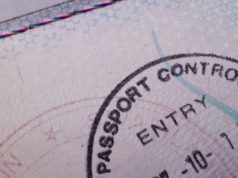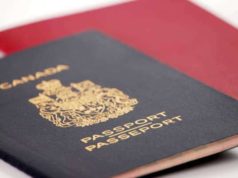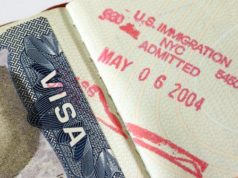
Getting an L1 visa can be a complex process, but with the right knowledge, it can be easier than you think. This type of visa is designed for multinational companies that need to transfer their employees from a foreign country to a branch in the United States. In this article, we will guide you through the six steps required to obtain an L1 visa with updated information from government resources.
Step 1: Meet the Eligibility Criteria
The first step towards obtaining an L1 visa is to meet the eligibility criteria. You must be employed by a multinational company that has a branch in the United States or plans to establish one. The company must have been in operation for at least one year, and you should have worked for the company for at least one year in the past three years.
If you meet these requirements, you can apply for either an L1A visa, which is for managers or executives, or an L1B visa, which is for employees with specialized knowledge. It is important to note that only the employer can file the L1 visa application, and the process can take several months.
Step 2: Gather the Required Documents
To apply for an L1 visa, you will need to gather a variety of documents. These documents include your passport, a letter from your current employer stating your employment history, and proof of your financial support. You will also need to provide evidence of your specialized knowledge or executive or managerial experience.
Additionally, your employer will need to provide documentation proving the existence of its U.S. branch, evidence that the U.S. branch requires your services, and proof that you meet the eligibility criteria for either an L1A or L1B visa.
Step 3: File Form I-129
After gathering all the required documents, your employer must file Form I-129, Petition for Nonimmigrant Worker with U.S. Citizenship and Immigration Services (USCIS). This form will request approval for your L1 visa.
When completing Form I-129, your employer must provide a detailed job description along with evidence of your specialized knowledge or managerial or executive experience. You will also need to include a letter from your current employer and evidence of the existence of the multinational company and its U.S. branch.
Step 4: Wait for USCIS Approval
Once the USCIS receives your employer’s Form I-129, they will review it to determine whether or not to approve your L1 visa. Be aware that this process can take several months, and USCIS might request additional evidence or interviews before making a decision.
It is important to note that if the USCIS approves your L1 visa, it will be valid for three years for an L1A visa and five years for an L1B visa. You can apply for an extension once the visa expires.
Step 5: Schedule an Appointment with the U.S. Embassy or Consulate
After receiving approval from USCIS, you will need to schedule an appointment with the U.S. embassy or consulate in your home country. This appointment is critical as it will be the final step in the L1 visa process.
During the appointment, you will need to provide the required documents, including your passport and USCIS approval notice. The embassy or consulate will also ask you to complete a visa application, and you will need to pay a non-refundable application fee.
Step 6: Attend Your Interview
The final step towards obtaining your L1 visa is to attend your interview at the U.S. embassy or consulate. During the interview, the consular officer will ask you a series of questions regarding your background, employment history, and qualifications.
Be honest and kind during the interview, and make sure to provide any additional evidence the consular officer requests. If the officer approves your visa, they will ask you to leave your passport at the embassy or consulate, and it will be returned to you with your visa stamp. If your visa is denied, the officer will provide an explanation for the decision.
Conclusion
Obtaining an L1 visa can be a long and complex process, but it is essential for multinational companies that need to transfer employees to the United States. By following these six steps, you can increase your chances of success in obtaining an L1 visa. Remember to be patient and honest throughout the process, and don’t hesitate to ask for help if you need it. Good luck!
Do I Qualify For L1 Visa?
An L1 visa is a document that allows foreign nationals to work, without restriction, in the United States for
up to three years. It is primarily a corporate visa and is used by employers to shuffle employees from their home countries to US offices. The two companies must be affiliated in some manner, either as a parent-child
organizational structure or as sister companies. It is not an immigration visa but can be used to apply for a green card at a later date.
What are the types of L-1 Visas?
There are different types of L1 visas for different types of workers. These visas vary in length. The worker, upon receiving either of these visas, may travel to the US to work in an office affiliated with his or her company, or help establish a local affiliate. The L-1A classification is for executives and managers and is valid for seven years. The L1-B classification is for specialized knowledge and is valid for five years. L1-B visas are used especially for IT workers born in India that apply their specialized knowledge for a US subsidiary.
How does one apply for an L-1 visa?
Usually, a worker will have to file a regular petition, which is subject to approval by the US Citizenship and
Immigration Services (USCIS). Some companies that require the large scale transfers of employees may be eligible for blanket visa procedures. For this procedure, the employee merely files a petition with supporting documents and the process is streamlined to obtain a visa. For instance, blanket visa holders need not file another petition to renew their status.
Step by Step:
1. The visa seeker must ensure they meet all of the listed requirements, especially the requirement that they have worked for the employer for at least one year in a professional capacity. Depending on the employee’s status in the company, such as specialized knowledge or a management role, may entitle the visa seeker to a different class of L-1 visa which allows for a longer stay.
2. The visa seeker must fill out for I-129, Petition for a non-immigrant worker.
a. There are 35 pages but all sections need not be filled out by an L-1 applicant. Read the instructions carefully.
b. Recent changes include asking the applicant about controlled technology and technical data the employee could potentially access in the United States.
3. After the I-129 has been completed, submit the form, along with $325 dollars to the nearest US consulate or embassy.
4. The consulate may require an RFE (Request for Evidence) correspondence to clear up missing or unclear parts of the petition. Failure to answer the RFE will entail an automatic denial.
5. The consular office will issue an I-797 Notice of Action to the applicant which signifies that the petition is approved.
6. The applicant is now cleared to apply for the visa at the nearest US consulate.
a. The visa is usually, but not always issued after that. A visa will not be issued if the USCIS determines that the company does not meet the requirements to operate in the United States or that fraud has been committed on the part of the applicant or employer
What are the requirements for a blanket petition?
The US government requires the employer to have over 1,000 employees and a US office that has been in
operation for over a year. Additionally, the employer must be engaged in selling commercial goods and services and have more than three foreign or domestic branches. Lastly, the employer with under a thousand employees must either have obtained at least 10 L-1 approvals during the previous 12-month period or have
its US branches gross $25 million.
A blanket petition allows for a faster approval process for individual applicants with minimal paperwork on the
part of the employee or employer. Blanket petitions can also be renewed within the US unlike other
petitions that require the employee to return home and reapply for their visa to re-enter the country.
For family members
A spouse and minors may file an L-2 petition to join an L-1 visa holder in the United States. The spouse will also be able to work and the children may attend school. The children however may not accept employment. The spouse must receive an Employment Authorization Document from the USCIS and can then apply for a Social Security number and begin employment.
For Canadians
In accordance with the North American Free Trade Act, a Canadian citizen need not petition in advance and
can apply for an L-1 visa at the port of entry.
For workers establishing new offices
If the foreign worker intends to set up a US office for his or her company they must demonstrate that the
organization or company has secured a physical space for the new office and that the employer has the capability to do business in the United States. Employees establishing offices may stay for up to one year which allowances for renewal depending on the type of visa. L1-B holders for example may extend their
stay in increments of two years until the five-year maximum is reached.
How might the consulate determine visa fraud has been committed?
The Department of Homeland Security has found an increase of visa holders not possessing the specialized knowledge required for L-1B eligibility. Such is fraud on the part of the employer to get around H1-B visa quotas. The L-1 visa is desirable for a number of reasons, not the least of which is an absence of meaningful scrutiny of the visa holder’s qualifications and the ability of the spouse to seek employment in the United States. If the visa seeker is found to be unskilled or terminates employment soon after arriving in the US, the visa petition may be reconsidered.
Dual Intent
L-1 visa holders may pursue immigration to the United States with their visa. By the doctrine of dual intent, this means that the worker may come to the United States with the intention of working for the employer, but also have immigrant intent to pursue the process by which they may gain a green card and remain in the United States as a permanent resident.





























